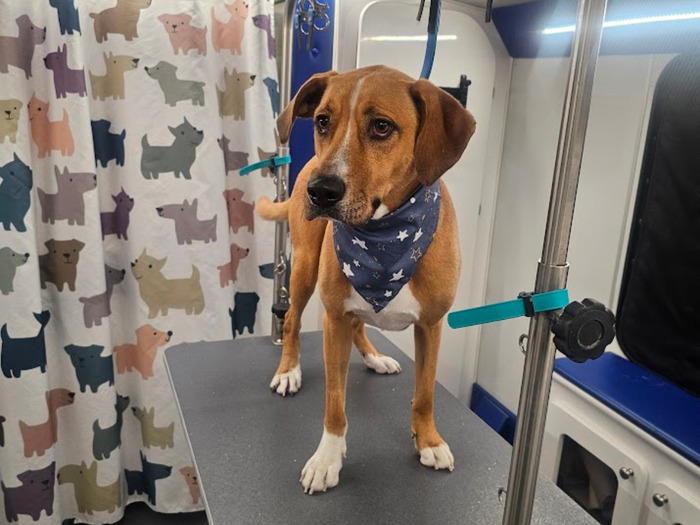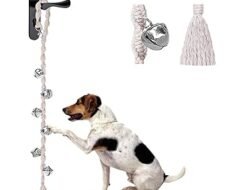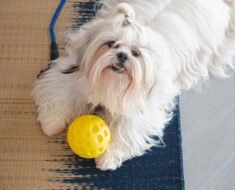Introducing your dog to a grooming table can feel like a challenge, but it doesn’t have to be stressful for either of you. If your dog is nervous or restless around grooming tools, you’re not alone.
The good news is that with the right approach, you can make this experience calm and even enjoyable. You’ll discover simple, effective steps to help your dog feel safe and comfortable on the grooming table. Ready to transform grooming time from a struggle into a smooth routine?
Keep reading—you and your dog deserve it.
Choosing The Right Grooming Table
Choose a grooming table that fits your dog’s size well. A table too small or too big can cause discomfort. Stability is very important. A strong, steady table helps your dog feel safe.
A non-slip surfacestops your dog from slipping. This keeps them calm and steady. It also makes grooming easier and safer for both.
Tables with adjustable heightlet you work comfortably. Adjust the table to avoid bending or straining. This helps you groom your dog gently and carefully.
Preparing Your Dog For Grooming
Let your dog see and sniffthe grooming tools first. Place brushes and clippers near them. Do not use tools right away. This helps your dog feel safeand curious. Praise your dog softly while showing the tools. Use treats to reward calm behavior. This makes the tools seem friendlyand not scary.
Keep grooming practice very short. Five minutes is enough for the first times. Stop before your dog gets tired or stressed. Slowly increase time as your dog gets usedto the table and tools. Always give treats and kind words. This builds a positive experienceevery time.
Introducing The Grooming Table Gradually
Let the dog explore the grooming tableby itself first. Place the table in a quiet room. Allow the dog to sniff and walk around it. This helps the dog feel safe and curiousabout the new object.
Use treats and praiseto create a positive link with the table. Give a small treat each time the dog gets near or steps on the table. Say kind words like “good dog” in a soft voice. This builds trust and happinessaround grooming.
Avoid putting the dog on the table by force. Forcing can cause fear and stress. Instead, gently encourage the dog with treats and patience. Let the dog climb up on its own time. This makes grooming easierfor both you and the dog.

Credit: www.happyhoundsgrooming.com
Building Comfort On The Table
Start slowlyby gently placing your dog on the grooming table. Use soft, calm hands to touch and holdyour dog without force. This helps build trust and comforton the table.
Keep initial visits very short, just a few seconds. Gradually increase the timeyour dog stays on the table. This helps your dog feel safeand not rushed.
Stay calm and patient during each session. Speak in a soft voiceand offer treats for good behavior. Avoid sudden moves or loud noises to keep your dog relaxed and happy.
Incorporating Grooming Activities
Start by letting your dog explore the grooming table. Let them sniff and get used to the surface. Begin brushing with gentle strokes to make the dog feel calm and safe. Use a soft brush and go slow.
Introduce nail trimming by showing the clippers first. Let your dog see and smell them. Trim just one nail at a time. Praise your dog for staying still. Stop if your dog seems scared or restless.
| Check Area | What to Do | Tips |
|---|---|---|
| Ears | Look inside for dirt or smell | Use a soft cloth, be gentle |
| Paws | Check between toes for debris | Massage paws to relax your dog |
Keep sessions short and positive. Use treats and calm words. Repeat often to build comfort and trust.

Credit: www.pdga.online
Managing Stress And Anxiety
Stress signalsin dogs include yawning, lip licking, and trembling. Some dogs may try to hide or growl. Watch their eyes and ears for signs of discomfort. Early signs mean it is time to pause or slow down.
Calming aidslike soft music or pheromone sprays can help dogs relax. Using treats and gentle petting creates a positive feeling. A calm voice also soothes nervous dogs during grooming.
Taking breaks is important. Short rests prevent dogs from feeling overwhelmed. Let your dog step down from the table and relax before continuing. This helps build trust and makes grooming easier over time.
Maintaining A Positive Routine
Keeping a regular grooming schedulehelps dogs feel safe and calm. Dogs know what to expect at set times. This reduces stressand builds trust. Consistency helps dogs learn that grooming is normal.
Using reward systemslike treats or praise encourages good behavior. Rewards make dogs happy during grooming. This creates a positive linkwith the grooming table. Small rewards work best at first.
Start with simple stepslike standing near the table. Then, slowly add more grooming actions. This gradual skill buildinghelps dogs adjust without fear. Patience is key. Each step should be easy and fun for the dog.

Credit: www.reddit.com
Frequently Asked Questions
How To Prepare A Dog For Grooming Table Introduction?
Start by familiarizing your dog with the grooming area. Use treats and positive reinforcement to create a calm environment. Allow your dog to explore the table at their own pace before lifting. Keep sessions short and gradually increase time spent on the table.
What Are Common Signs Of Stress During Grooming?
Signs include panting, trembling, whining, and avoiding eye contact. Some dogs may try to escape or show aggression. Recognizing these signs early helps prevent negative experiences. Always respond with patience and calming techniques to reduce stress.
How Can Treats Help In Grooming Table Training?
Treats motivate and reward your dog for calm behavior. They build positive associations with the grooming table. Use small, tasty treats during each step of introduction. This approach encourages cooperation and reduces fear over time.
How Long Should Grooming Table Sessions Last Initially?
Begin with 2 to 5-minute sessions to avoid overwhelming your dog. Gradually increase the duration as your dog becomes comfortable. Short, frequent sessions promote positive experiences and reduce anxiety related to grooming.
Conclusion
Introducing dogs to a grooming table takes patience and care. Start slow and keep sessions short. Use treats and praise to build positive feelings. Watch your dog’s body language closely. Make the experience calm and safe every time. This helps your dog feel comfortable and relaxed.
Grooming can become a pleasant routine for both of you. Keep practicing regularly, and trust will grow. Small steps lead to big progress. Your dog will soon enjoy grooming time without stress.





